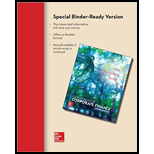
Calculating Cash Collections [LO3] The Morning Jolt Coffee Company has projected the following quarterly sales amounts for the coming year:
![Chapter 18, Problem 5QP, Calculating Cash Collections [LO3] The Morning Jolt Coffee Company has projected the following , example 1](http://dev-ingestion-image-output.s3-website-us-east-1.amazonaws.com/9780077861704/Chapter-18/images/61704-18-5qp-question-digital_image_001.png)
a. Accounts receivable at the beginning of the year are $345. The company has a 45-day collection period. Calculate cash collections in each of the four quarters by completing the following:
![Chapter 18, Problem 5QP, Calculating Cash Collections [LO3] The Morning Jolt Coffee Company has projected the following , example 2](http://dev-ingestion-image-output.s3-website-us-east-1.amazonaws.com/9780077861704/Chapter-18/images/61704-18-5qp-question-digital_image_002.png)
b. Rework (a) assuming a collection period of 60 days.
c. Rework (a) assuming a collection period of 30 days.
a)
To determine: The cash collection for each four quarters when the collection period is 45days.
Introduction:
Cash collection is the amount collected through business. It is a task of accounts receivables.
Average cash collection period is the number of days taken to collect the cash from the customers.
Answer to Problem 5QP
Q1-$755
Q2-$835
Q3-$890
Q4-$970
Explanation of Solution
Given information:
Accounts receivable at the beginning of the year is $345, Collection period is 45 days.
Compute cash collection for each four quarters:
Note: All the receivables, which are outstanding, will be collected in the current year
Compute ending receivables for quarter 1:
Therefore ending receivable will be half of the current year sales
Hence, ending receivables is $410.
Compute cash collection for quarter 1:
Hence, cash collected for the quarter 1 is $755.
Compute ending receivables for quarter 2:
Hence, ending receivables is $425.
Compute cash collection for quarter 2:
Hence, cash collected for the quarter 2 is $835.
Compute ending receivables for quarter 3:
Hence, ending receivables is $465.
Compute cash collection for quarter 3:
Hence, cash collected for the quarter 1 is $890.
Compute ending receivables for quarter 4:
Hence, ending receivables is $505.
Compute cash collection for quarter 4:
Hence, cash collected for the quarter 1 is $970.
b)
To determine: The cash collection for each four quarters when the collection period is 60 days.
Answer to Problem 5QP
Q1-$891.67
Q2-$840
Q3-$903.33
Q4-$983.33
Explanation of Solution
Given information:
Accounts receivables at the beginning of the year are $345, Collection period is 45 days.
Compute cash collection for each four quarters:
Note: All the receivables, which are outstanding, will be collected by this current year
Compute ending receivables for quarter 1:
Therefore ending receivable will be half of current year sales
Hence, ending receivables is $273.33.
Compute cash collection for quarter 1:
Hence, cash collected for the quarter 1 is $891.67.
Compute ending receivables for quarter 2:
Hence, ending receivables is $283.33.
Compute cash collection for quarter 2:
Hence, cash collected for the quarter 2 is $840.
Compute ending receivables for quarter 3:
Hence, ending receivables is $310.
Compute cash collection for quarter 3:
Hence, cash collected for the quarter 1 is $903.33.
Compute ending receivables for quarter 4:
Hence, ending receivables is $336.67.
Compute cash collection for quarter 4:
Hence, cash collected for the quarter 1 is $983.33.
c)
To determine: The cash collection for each four quarters when the collection period is 30 days.
Answer to Problem 5QP
Q1-$618.33
Q2-$830
Q3-$876.67
Q4-$956.67
Explanation of Solution
Given information:
Accounts receivable at the beginning of the year is $345, Collection period is 30 days.
Compute cash collection for each four quarters:
Note: All the receivables, which are outstanding, will be collected in this current year
Compute ending receivables for quarter 1:
Therefore ending receivable will be half of the current year sales
Hence, ending receivables is $546.67.
Compute cash collection for quarter 1:
Hence, cash collected for the quarter 1 is $618.33.
Compute ending receivables for quarter 2:
Hence, ending receivables is $566.67.
Compute cash collection for quarter 2:
Hence, cash collected for the quarter 2 is $830.
Compute ending receivables for quarter 3:
Hence, ending receivables is $620.
Compute cash collection for quarter 3:
Hence, cash collected for the quarter 1 is $876.67.
Compute ending receivables for quarter 4:
Hence, ending receivables is $673.33.
Compute cash collection for quarter 4:
Hence, cash collected for the quarter 1 is $956.67.
Want to see more full solutions like this?
Chapter 18 Solutions
Fundamentals of Corporate Finance (Special Edition for Rutgers Business School)
 Essentials Of InvestmentsFinanceISBN:9781260013924Author:Bodie, Zvi, Kane, Alex, MARCUS, Alan J.Publisher:Mcgraw-hill Education,
Essentials Of InvestmentsFinanceISBN:9781260013924Author:Bodie, Zvi, Kane, Alex, MARCUS, Alan J.Publisher:Mcgraw-hill Education,

 Foundations Of FinanceFinanceISBN:9780134897264Author:KEOWN, Arthur J., Martin, John D., PETTY, J. WilliamPublisher:Pearson,
Foundations Of FinanceFinanceISBN:9780134897264Author:KEOWN, Arthur J., Martin, John D., PETTY, J. WilliamPublisher:Pearson, Fundamentals of Financial Management (MindTap Cou...FinanceISBN:9781337395250Author:Eugene F. Brigham, Joel F. HoustonPublisher:Cengage Learning
Fundamentals of Financial Management (MindTap Cou...FinanceISBN:9781337395250Author:Eugene F. Brigham, Joel F. HoustonPublisher:Cengage Learning Corporate Finance (The Mcgraw-hill/Irwin Series i...FinanceISBN:9780077861759Author:Stephen A. Ross Franco Modigliani Professor of Financial Economics Professor, Randolph W Westerfield Robert R. Dockson Deans Chair in Bus. Admin., Jeffrey Jaffe, Bradford D Jordan ProfessorPublisher:McGraw-Hill Education
Corporate Finance (The Mcgraw-hill/Irwin Series i...FinanceISBN:9780077861759Author:Stephen A. Ross Franco Modigliani Professor of Financial Economics Professor, Randolph W Westerfield Robert R. Dockson Deans Chair in Bus. Admin., Jeffrey Jaffe, Bradford D Jordan ProfessorPublisher:McGraw-Hill Education





